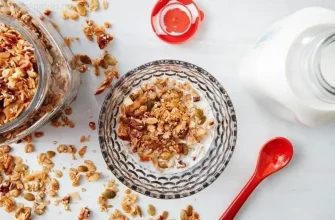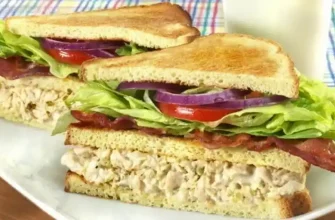An omelette—a simple yet elegant dish that’s both quick to make and endlessly customizable. Whether you’re a seasoned home cook or someone who just discovered the joy of flipping eggs, the omelette is one of those meals that speaks to us all. It’s not just about eggs and fillings; it’s about technique, patience, and understanding the science behind it all. Let’s dive into the world of omelettes and explore everything from basic principles to some lesser-known tricks that can take your omelette-making game to the next level.
The Essential Ingredients
At its core, an omelette is a dish made from eggs. But that’s just the start. Let’s talk about the ingredients first, and how you can elevate this simple dish:
- Eggs: Fresh eggs are crucial. They’re the base of the omelette, so use the best eggs you can get your hands on. Look for organic, free-range, or pasture-raised eggs if possible—these tend to have richer yolks and a better flavor. If you want to reduce cholesterol intake or are sensitive to eggs, try egg whites, although keep in mind that the texture and flavor will differ.
- Butter or Oil: Butter is traditional, and for good reason. It provides a rich, golden color and a creamy texture. However, olive oil or avocado oil can be a great substitute, especially if you’re after a healthier fat profile or just like the flavor of olive oil.
- Salt and Pepper: Seasoning matters. I’m not just talking about a sprinkle of salt—add just enough to bring out the natural flavors of the eggs, but not so much that you overpower them. Pepper adds a little bite, and other seasonings like paprika or fresh herbs can be a game-changer depending on your mood or the fillings you choose.
- Fillings: This is where you can have fun! Classic fillings include cheese (grated cheddar, Swiss, or goat cheese), vegetables (spinach, mushrooms, tomatoes), meats (ham, bacon, smoked salmon), and herbs (chives, parsley). The beauty of the omelette is that you can customize it to fit your dietary needs or cravings.
The Technique: How to Make a Perfect Omelette
Now that we’ve got our ingredients ready, let’s get into the method. The technique can be simple, but if you’re aiming for that restaurant-style omelette that’s fluffy, delicate, and perfectly folded, a bit of finesse is required. Here’s a breakdown of how to do it:
- Whisk the Eggs: Crack the eggs into a bowl and whisk them vigorously. The goal is to incorporate air into the eggs to ensure they cook up light and fluffy. You don’t need to overdo it, but a good 30-second whisk is recommended. If you’re after a fluffier omelette, adding a teaspoon of water or milk per egg can help create steam during cooking, resulting in a lighter texture.
- Heat the Pan: Get a non-stick skillet (or well-seasoned cast iron pan) on medium heat. Add a generous amount of butter or oil and let it melt and coat the bottom of the pan. You want it hot enough to create a gentle sizzle when you pour in the eggs, but not so hot that the eggs burn immediately. If the pan’s too hot, you’ll get brown spots; if it’s too cold, the eggs won’t cook evenly.
- Pour in the Eggs: Once your pan is prepped, pour in the beaten eggs. Give them a quick swirl to ensure they spread out evenly. Let them sit for a few seconds without stirring—this is where patience comes into play. Once the edges start to set, gently stir with a spatula, pushing the cooked eggs from the edges toward the center.
- Add Fillings: When the eggs are mostly set but still slightly runny in the middle (think custard-like, not liquid), add your fillings. Don’t overstuff—just a couple of spoonfuls of cheese, veggies, or meats should be enough. Be sure not to overload it, or you’ll risk breaking the omelette when you try to fold it.
- Fold and Serve: Here comes the fun part—folding the omelette. Once the fillings are in, gently fold one side over the other using your spatula. You can make a simple half-fold or a more classic third-fold, where one edge is folded over the other in thirds. Let the omelette rest in the pan for a few more seconds to allow the cheese to melt and the center to finish cooking.
- Flip or Slide: At this point, your omelette is ready to be served. You can either slide it out of the pan directly onto your plate or use your spatula to gently flip it if you want to make it a bit crispier on the outside.

Common Pitfalls and How to Avoid Them
As with any dish, making an omelette comes with its challenges. But don’t worry—every problem has a solution.
- Overcooking: If you cook your omelette too long, it will be dry and rubbery. The trick here is to take it off the heat when it’s still slightly undercooked in the center. It’ll continue cooking from residual heat.
- Sticking to the Pan: A well-seasoned pan or a good non-stick skillet is essential here. If your omelette sticks, it’s usually because the pan isn’t hot enough, or there’s not enough fat. If you’re struggling, invest in a solid non-stick pan.
- Too Little Fluff: If your omelette isn’t as fluffy as you’d like, try whisking the eggs more thoroughly and consider adding a splash of water or milk.
- Messy Fold: Don’t worry if your first few attempts don’t fold perfectly. It’s a skill that takes time to master. Try using a smaller pan for a more controlled fold and adjust your cooking method to get the right texture first.
Fun Facts: Omelettes Around the World
Though the French are often credited with popularizing the omelette, the dish is beloved in various forms across the globe. Here’s a quick look at how omelettes are enjoyed in different countries:
- France: The quintessential omelette is made with just eggs, butter, and seasoning. It’s soft and slightly runny inside.
- Japan: The Japanese take on an omelette, known as tamago, is a sweet, rolled omelette that is often served on sushi or eaten as a snack.
- Spain: The tortilla española is a type of omelette made with potatoes and onions, thick and hearty compared to its French counterpart.
- Middle East: In countries like Lebanon, the saj omelette is filled with vegetables, herbs, and sometimes cheese, wrapped up in flatbread for a hearty meal.
Opinions from Around the World
Maria, 52, Mexico:
“I’ve been making omelettes for years, but I love experimenting with different fillings. Lately, I’ve been using a lot of avocado, bacon, and some queso fresco for a delicious breakfast that keeps me going all day. The trick is to not rush—let the eggs set gently, so they stay light and fluffy.”
John, 34, United States:
“I’m a big fan of adding hot sauce to my omelette. It gives it that extra kick. I usually go for a combination of spinach, cheese, and a bit of spicy chorizo—definitely not your typical omelette, but it hits the spot.”
Anita, 60, India:
“In India, we make an omelette that’s a bit more spicy. We add onions, tomatoes, chilies, and sometimes coriander. It’s a great breakfast or quick snack when I’m in a rush. The key is the seasoning—it’s what brings everything together.”
Omar, 48, Egypt:
“I love a good Mediterranean omelette with olives, feta cheese, and some za’atar. The flavor is just incredible. Omelettes are so versatile, and you can really make them your own with whatever ingredients you have at hand.”
Tanya, 25, United Kingdom:
“I used to struggle with flipping my omelette without it breaking, but now I use a pan that’s just the right size for me. I love making an omelette with mushrooms, spinach, and a little bit of parmesan—nothing too fancy, just comfort food.”
Conclusion
An omelette isn’t just a dish; it’s a canvas for creativity. Whether you stick to the classics or get adventurous with fillings and spices, mastering the art of the omelette is an enjoyable and rewarding pursuit. It’s also one of those meals that can be easily customized to suit any dietary needs or taste preferences. And if you’ve never made one before, don’t worry—it’s a process you can perfect with a bit of practice, and before you know it, you’ll be flipping omelettes like a pro!
Happy cooking, and may your omelettes always be fluffy and flavorful!









